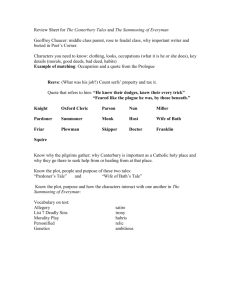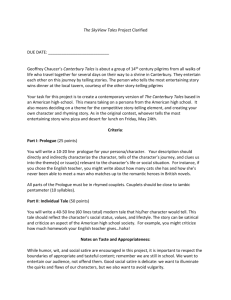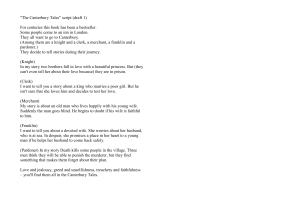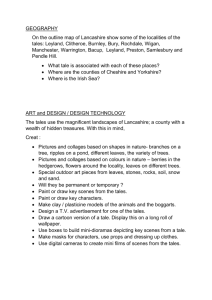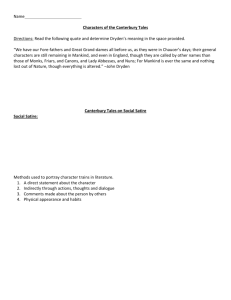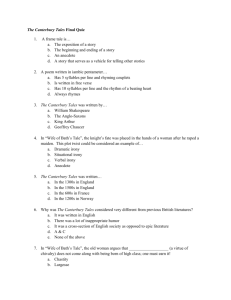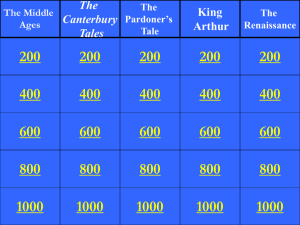TEST - What to Study - English 11
advertisement
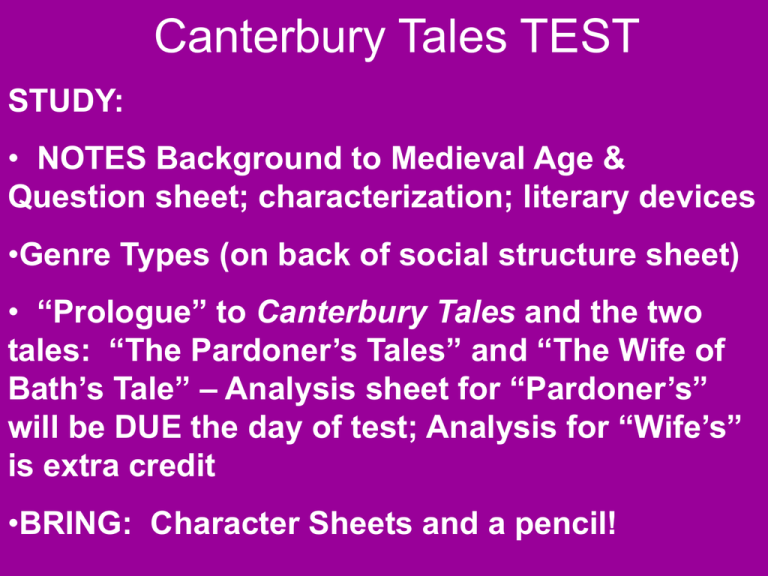
Canterbury Tales TEST STUDY: • NOTES Background to Medieval Age & Question sheet; characterization; literary devices •Genre Types (on back of social structure sheet) • “Prologue” to Canterbury Tales and the two tales: “The Pardoner’s Tales” and “The Wife of Bath’s Tale” – Analysis sheet for “Pardoner’s” will be DUE the day of test; Analysis for “Wife’s” is extra credit •BRING: Character Sheets and a pencil! • Questions 1-43: Background to Medieval Age, Chaucer’s Life, The Prologue (p. 113), the tales and their lessons, literary devices & examples • Questions 44-75: Character descriptions and quotes • Questions 76-100: Vocabulary • Questions 101-125: Types of Tales & Literary Devices • Stereotype of a philosophical student • Suggests that the travelers have a storytelling contest to pass the time on their journey • Named Hubert; he has a natural gift for begging he plays the hurdy-gurdy, and he has a lisp • Has trouble sleeping because he's so in love; "could make songs and poems," and knows how to joust dance and draw • While this pilgrim must have spent many mornings carting manure through the fields, he followed Christian principles. • He plans to give a realistic account of what each person said • Enjoys telling filthy tavern stories; tells the tale of Alison and Nickolas and the trick they play on John • He is a "proper forester," has a longbow and a "head like a nut," and wears "a medal of St. Christopher" • A model of the landed gentry; kind, old, and generous • A "wrangler and buffoon"; plays the bagpipes • A "model ecclesiast"; a "shepherd and no mercenary" • Named Harry Bailey; he is a "merry-hearted man" • A tale of an inspirational act or martyrdom • Stories based on clever tricks involving infidelity • “The Wife of Bath’s Tale,” because it speaks of love, adventure, and pageantry, can be considered a _____. • A sermon that illustrates a known moral lesson. • Stories set in the Brittany region of France or Celtic in origin; speak of magic, fairies, folklore, and courtly love. • Tales told to inspire moral conduct in the listener.

